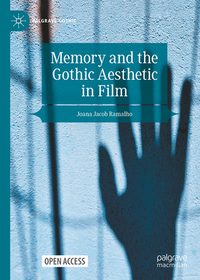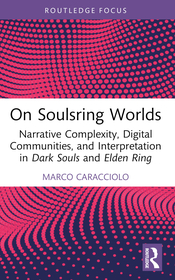
Memory and the Gothic Aesthetic in Film
Series: Palgrave Gothic;
- Publisher's listprice EUR 53.49
-
22 184 Ft (21 128 Ft + 5% VAT)
The price is estimated because at the time of ordering we do not know what conversion rates will apply to HUF / product currency when the book arrives. In case HUF is weaker, the price increases slightly, in case HUF is stronger, the price goes lower slightly.
- Discount 20% (cc. 4 437 Ft off)
- Discounted price 17 748 Ft (16 902 Ft + 5% VAT)
Subcribe now and take benefit of a favourable price.
Subscribe
22 184 Ft

Availability
printed on demand
Why don't you give exact delivery time?
Delivery time is estimated on our previous experiences. We give estimations only, because we order from outside Hungary, and the delivery time mainly depends on how quickly the publisher supplies the book. Faster or slower deliveries both happen, but we do our best to supply as quickly as possible.
Product details:
- Edition number 2025
- Publisher Springer Nature Switzerland
- Date of Publication 29 November 2024
- Number of Volumes 1 pieces, Book
- ISBN 9783031736278
- Binding Hardback
- No. of pages281 pages
- Size 210x148 mm
- Language English
- Illustrations XV, 281 p. 8 illus. Illustrations, black & white 616
Categories
Long description:
This open access book defines the cinematic Gothic as an aesthetics of memory and exile. Guided by three intersecting concepts – memory, travelling, and touch – it suggests that the cross-border movements of exiles, émigrés, and professional travellers had a crucial impact on the emergence, development, and dissemination of the Gothic. This approach expands the canon to overlooked films, filmmakers, and national traditions. Drawing on film, memory, and gothic studies, the book urges the reader to think across other disciplines, including phenomenology, neurology, cognitive neuroscience, and disability studies. From hands to pianos, accordions, gloves, amnesia, and wounded bodies, the volume proposes a reappraisal of the Gothic by redrawing its scope, retracing its origins, and refocusing attention on surfaces as sites of socio-political meaning.
MoreTable of Contents:
Chapter 1. Introduction: The Gothic Aesthetic.- Chapter 2. Memory as Personal History: Émigrés, Exiles, and Professional Travellers.- Chapter 3. Memory-Objects and Journeys of Re-collection.- Chapter 4. Memory as Touch: The Hand, Amputation, and Sensory Contagion.- Chapter 5. Tactile Travelling, Manual Space, and the Duality of Gothic Hands.- Chapter 6. Pathological Journeys, Gloves, and ‘Affect-Logic’.- Chapter 7. Amnesia and Oblivion.- Chapter 8. The Gothic Piano: Elegy to an Absence.- Chapter 9. Conclusion: Routes of Re-membering.
More






